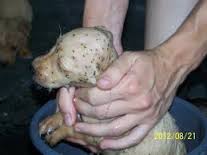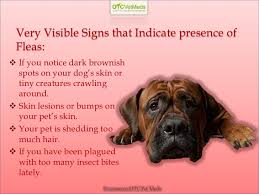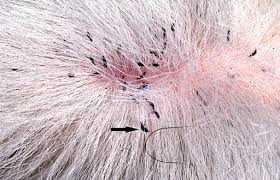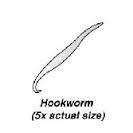Many of the most common canine diseases can be prevented by vaccinating your dog or by feeding your dog a high quality diet accompanied by supplements, herbs, essential oils and aromatherapy and homeopathy. The immune systems of animals will be a whole lot healthier if their diet, or at least a portion of their diet, contains fresh and raw foods.
For the most clinically important vaccines, the duration of immunity is at least 3 years and probably more than 5. Vaccinations for young dogs should be spaced out over two to four weeks. Vaccinations should be split up and fewer done at one time. Older animals usually do not require boosters. Annual boosters should be given at one year and then boosters every 3 years unless required by law. To monitor your dogs health, check the antibody levels annually between boosters. These are tests known as antibody titers. They determine the strength of an animals immune system to a particular disease. These tests are seen by many veterinarians as a promising way to assess the need for additional vaccines. Dogs should have antibody titers against canine distemper and canine parvovirus evaluated annually until you know how long the vaccination induced antibodies actually last in the blood.
Over the years, we have been destroying the immune systems of animals by over vaccinating. Over vaccination causes immune suppression and opens the door to various acute and chronic diseases. A healthy animal is unlikely to become ill even if exposed to infectious agents. Keep an eye open for the early warning signs of imbalance or infection and treat with natural means whenever possible.
 Canine distemper- Widespread viral disease. Highly contagious, often fatal. Common with puppies and non-vaccinated dogs. Signs are yellow discharge from eyes and nose, coughing, fever, loss of appetite, loss of vitality, diarrhea and convulsions.
Canine distemper- Widespread viral disease. Highly contagious, often fatal. Common with puppies and non-vaccinated dogs. Signs are yellow discharge from eyes and nose, coughing, fever, loss of appetite, loss of vitality, diarrhea and convulsions.
Canine hepatitis-Most common in young dogs. Most times dogs can recover after a long recuperation period. Spread from one animal to another through contaminated feeding and drinking pans and through urine of effected dogs. Affects the blood vessels of the liver. Signs are the same as canine distemper.
 Rabies- Also known as Hychrophobia. Caused by a virus. Spread by saliva of infected animals. Most infected animals die. Most frequently affected animals are skunks, raccoons, fox, bats, cattle and cats. With rabies, the nerves, spinal cord and brain are affected. Signs are excitement, sudden change in disposition, difficulty in swallowing food or water, paralysis and coma.
Rabies- Also known as Hychrophobia. Caused by a virus. Spread by saliva of infected animals. Most infected animals die. Most frequently affected animals are skunks, raccoons, fox, bats, cattle and cats. With rabies, the nerves, spinal cord and brain are affected. Signs are excitement, sudden change in disposition, difficulty in swallowing food or water, paralysis and coma.
 Leptospiros– Caused by spiral microorganisms of the genus leptospira, and is fairly common in dogs. Can be transmitted to man. Spread through the urine of infected animals, dogs and rats the most common. Signs include muscular stiffness and soreness, fever, reddening of the membranes of the mouth and eyes, loss of appetite, vomiting, and diarrhea. To control the spread of leptospiris, the kennel area must be free of rats, and the food and water supply must be protected from contamination by urine from contaminated dogs.
Leptospiros– Caused by spiral microorganisms of the genus leptospira, and is fairly common in dogs. Can be transmitted to man. Spread through the urine of infected animals, dogs and rats the most common. Signs include muscular stiffness and soreness, fever, reddening of the membranes of the mouth and eyes, loss of appetite, vomiting, and diarrhea. To control the spread of leptospiris, the kennel area must be free of rats, and the food and water supply must be protected from contamination by urine from contaminated dogs.
 External parasites- Are small insects. These parasites live on and in the skin. They cause damage by sucking blood or by feeding on the dog’s tissues.
External parasites- Are small insects. These parasites live on and in the skin. They cause damage by sucking blood or by feeding on the dog’s tissues.

 Ticks– When present in large numbers can cause anemia. They can be observed by standing still on the animal’s body with their heads buried deep in the skin. Ticks can also be found in bedding, carpeting or in cracks in the walls and floors of the kennel. They may be present in grass and bushes as well.
Ticks– When present in large numbers can cause anemia. They can be observed by standing still on the animal’s body with their heads buried deep in the skin. Ticks can also be found in bedding, carpeting or in cracks in the walls and floors of the kennel. They may be present in grass and bushes as well.


 Fleas- Observed as they crawl or hop very rapidly through the dog’s coat. They also live in bedding and in the cracks of kennels.
Fleas- Observed as they crawl or hop very rapidly through the dog’s coat. They also live in bedding and in the cracks of kennels.

 Lice- 2 types of lice which affect a dog, biting lice and sucking lice. Biting lice live off the dog’s tissue, sucking the animals blood. Biting lice are observed crawling over the skin and thru the hair. When feeding, sucking lice are usually immobile and attach themselves so that they are perpendicular to the skin of the host. The eggs of the lice are called nits and are found as small white or gray crescent shaped objects fastened to the hairs. Lice can live only a short time if they are not on the dog’s body.
Lice- 2 types of lice which affect a dog, biting lice and sucking lice. Biting lice live off the dog’s tissue, sucking the animals blood. Biting lice are observed crawling over the skin and thru the hair. When feeding, sucking lice are usually immobile and attach themselves so that they are perpendicular to the skin of the host. The eggs of the lice are called nits and are found as small white or gray crescent shaped objects fastened to the hairs. Lice can live only a short time if they are not on the dog’s body.


Hookworms- Most harmful parasite that lives in the dogs intestine. Small and threadlike, only 1/3 to 4/5 of an inch in length. They suck blood and tear at the intestinal wall with their teeth. The adult lives in the intestine, and the female produces the eggs. The eggs are passed through the infected dog’s feces. Immature hookworms known as larvae gain entrance to the body by penetrating the dog’s skin or by being swallowed as the dog licks the ground or itself. After the larvae gain entrance to the body, they pass to the intestine or to the lungs. Symptoms include pale eye and mouth membranes; feces may be loose and contain blood, weight loss. Prevention includes keeping the kennel and training area free of feces.
Elle Harris






